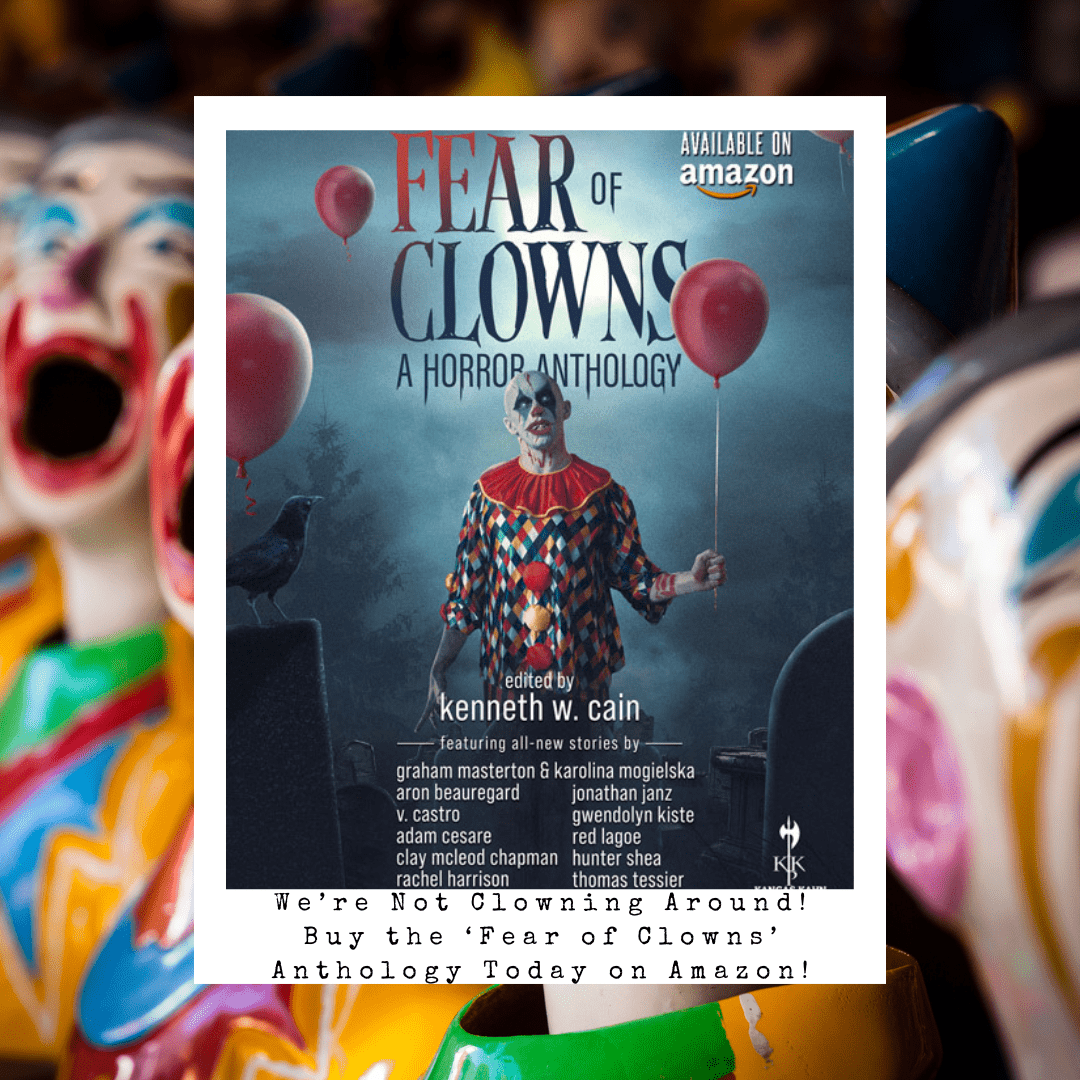WiHM 2023: Justine Norton-Kerston on Horror in Solarpunk

Justine Norton-Kerston on Horror in Solarpunk
By Angelique Fawns
Justine Norton-Kertson (they/she/he) envisions a brighter future for all of us, but also embraces the dark side. They are the co-editor-in-chief of Solarpunk Magazine, a bi-monthly magazine of radically hopeful and optimistic science fiction, fantasy, and climate fiction. They recently edited the lunarpunk anthology Bioluminescent which was released this January in conjunction with Android Press. If the genre interests you, they also have a nonfiction book, Solarpunk Witchcraft due to be released by Microcosm Publishing in 2024. I sat down with Justine to learn more about their vision and talk about the intersection of horror with solarpunk.
AF: Tell me about the creation of Solarpunk Magazine
JNK: I’ve been involved in radical community organizing for many years, helping to plan and coordinate protests, union organizing, strikes and other direct action, eviction defense, and even more mainstream stuff like ballot measure campaigns. That work is difficult. It’s a lot of hours, often volunteer, and the defeats seem to come more often the victories. It’s really easy to burn out. I was just about at that point when I first learned about solarpunk in early 2021, and just the idea of purposefully hopeful and utopian science fiction with a focus on solutions to climate change started to reinvigorate me.
I dove into some of the foundational short story anthologies like Sunvault: Stories of Solarpunk and Eco-speculation and Glass and Gardens: Solarpunk Summers. I had already created and was running a small online literary speculative fiction magazine, so it didn’t take long for the idea of Solarpunk Magazine to start forming in my head. So I created a really short and simple editorial team application and posted the link on social media to start and just see what happened. Fortunately, that was all it took. I got a lot of applicants just from non-sponsored social media posts. Among those applicants I found plenty of people who seemed like the right fit and before I knew it I had a co-editor-in-chief, fiction editors, poetry editors, and nonfiction editors from countries all over the world.
From there, we did outreach to a number of authors to commission stories, we opened submissions to the general public, and we decided to run a crowdfunding campaign as a way to build a decent sized subscription base right from the start. We became really active on social media, started a blog and a podcast so we could be putting out content even before the first issue of the magazine dropped. The crowdfunder was really successful, and we started our first year with almost five hundred subscribers.
“…the idea of purposefully hopeful and utopian science fiction with a focus on solutions to climate change started to reinvigorate me.”
AF: Can you explain the difference between Solarpunk and Lunarpunk?
JNK: To take a definition from one of solarpunk’s founding thinkers and authors, Jay Springett, “solarpunk is a movement in speculative fiction, art, fashion and activism that seeks to answer and embody the question ‘what does a sustainable civilization look like, and how can we get there?’” Solarpunk is hopeful, scientific, and solutions based, and it has an aesthetic that is both somewhat broad and well-defined. The genre is made up of a spectrum that is defined by art nouveau as much as green brutalism. Bright colors and earth tones like green, orange, yellow, brown, and gold are common.
There’s plenty more that could be said, but that suffices to illustrate the difference between solarpunk and lunarpunk, which is a subgenre of solarpunk. As a subgenre, it shares many of the same characteristics as solarpunk. Lunarpunk is also hopeful and focused on solutions to climate change, but it has a darker aesthetic much more defined by gothic architecture and fashion than by art nouveau. Darker and cooler color combinations that include black, silver, blues, and purples that sparkle and glow. And while lunarpunk shares solarpunk’s focus on climate solutions that are rooted in tech, science, community, and system change, it also has a strong focus on spirituality—especially earth-based spiritualities like paganism and witchcraft—as well as introspection and the role those can play in building a better world. Perhaps not surprisingly then, lunarpunk also has a tendency to lean into the fantasy genre more than solarpunk.
“The genre is made up of a spectrum that is defined by art nouveau as much as green brutalism. Bright colors and earth tones like green, orange, yellow, brown, and gold are common.”
AF: The art on your website and stories is whimsical and unique. Can you tell me about your vision?
JNK: From the beginning we’ve had a vision with a few key elements worth delving into. One is publishing solarpunk stories that are both science fiction and fantasy. There’s a lot about solarpunk that can make it easy to get stuck in the science fiction genre, but fantasy has a lot to offer the solarpunk genre as well, not the least of which is a certain amount of whimsy and magic.
A second element of our vision is highlighting the people who live in and navigate solarpunk worlds. It can be easy to get caught up in the sleek and futuristic buildings, and to focus on the high tech at the heart of many of the solutions found in solarpunk stories. So we want to make sure that people and the role they play as individuals and communities is always a focus of the art and stories we publish.
A third important element of our vision is keeping the magazine grounded in speculative fiction, and more specifically science fiction and fantasy. Solarpunk is fairly unique in that it’s not just a genre of art, literature, games, and cosplay like steampunk or cyberpunk, for example. There’s a growing strain of radical activism and environmentalism within which people identify and refer to themselves as solarpunks. I think that’s a great development and I’m in no way disparaging it, but one of the consequences of that is the genre has kind of started preaching to the choir so to speak, and there’s a certain amount of pressure that exists for stories put out under the banner of solarpunk to fit certain criteria, essentially turning it into propaganda.
That’s not necessarily bad at all. Propaganda might have some negative connotations, but it’s important for any political movement. But while propaganda that preaches to the choir and “rallies the troops” is valuable, it’s also important that stories about building a better, more just, and more sustainable future reach those who aren’t already on board and in our camp. That’s why we want Solarpunk Magazine to be a space where authors are able to envision how we get to a better future without being penned in and confined by contemporary politics and tactical squabbles. We’ve taken this route because we want people who aren’t already firmly embedded in leftist and liberal ideology and an environmentalist perspective to be able to pick up stories we publish, read them, and be entertained.. Then maybe, hopefully, they’ll read some more and become intrigued. And if we’re fortunate then Solarpunk Magazine can—in that way—be effective in helping new people understand the importance of ending fossil fuels and creating new forms of energy that don’t damage the planet and threaten our civilizations.
AF: How do the elements of horror interact with solar and lunarpunk?
JNK: Both solarpunk and lunarpunk are genres with the more general category of climate fiction. Fiction that has climate change as a central theme actually goes back thousands of years; I’m thinking of stories like Gilgamesh and the various great flood myths. But especially in modern times, with our understanding of human caused climate change and the potential future that awaits us if we don’t change course, climate fiction has really taken a turn toward the dystopian and apocalyptic. There’s a whole strain of eco-horror that’s sort of epitomized by Jeff VanderMeer’s Southern Reach Trilogy. This whole strain of climate fiction is heavily influenced by stories about natural disasters, pandemics, and the horrors of the dystopian future that seems to become more of a reality every day.
When it comes to lunarpunk specifically, I think there’s fertile ground for the inclusion of horror elements, particularly suspense and the supernatural that lend themselves well to the gothic aesthetic and a focus on pagan spiritual traditions like witchcraft. But I also see plenty of room for mashing up horror and solarpunk elements whether it’s through the horrors of climate disasters, or the terrible and horrific things humans can do to each other within the context of attempting to build a utopian society. The interesting challenge for authors in attempting a kind of solarpunk horror is combining those elements of horror and climate fiction in a way that is ultimately hopeful and looking toward a better future.
“The interesting challenge for authors in attempting a kind of solarpunk horror is combining those elements of horror and climate fiction in a way that is ultimately hopeful and looking toward a better future.”
AF: What kind of writing do you do yourself? What are your influences?
JNK: I do all kinds of writing. I write quite a bit of nonfiction and political commentary. I also write poetry and have a solarpunk poem being published this April in the Stanza 2023 art and poetry anthology. In terms of fiction I write mostly science fiction and fantasy, solarpunk, lunarpunk, and horror. I don’t have much published yet because I’m so busy editing and publishing other people’s work (a job I love). But I’m trying to make a more concerted effort to regularly work on and submit my own writing for publication.
“I’d also like to see more stories that are set further out in the future and explore pitfalls and problems within communities that have already, by and large, successfully adapted to or solved climate change and are well on their way toward the utopian ideal.”
AF: Any advice for writers submitting to Solarpunk Magazine? What would you like to see more of?
JNK: I’d love to see some solid attempts at bringing together those elements of horror and climate solutions in a story that’s rooted in hope for a better, more just, equitable, and sustainable future. I’d also like to see more stories that are set further out in the future and explore pitfalls and problems within communities that have already, by and large, successfully adapted to or solved climate change and are well on their way toward the utopian ideal.

The Serpentseed Art by Hal Hefner.
AF: Tell me about your current projects and what readers can look forward to.
JNK: My nonfiction book, Solarpunk Witchcraft comes out next year, and I’m really excited about that. I have a near future ecopunk novella I’ve shopped around a little bit and am currently doing some revision work to. I’m working on a few different projects in the horror genre including some script writing that I’m confident will see the light of day one way or another. I’ve also been creating a card game called Gender Spectrum that should be publishing late this year or in the first part of 2024. One of the projects I’m most excited about though is one I’m working on with a couple other folks. It’s a solarpunk webcomic and card game called The Serpentseed that’s pretty heavily influenced by the horror genre.










